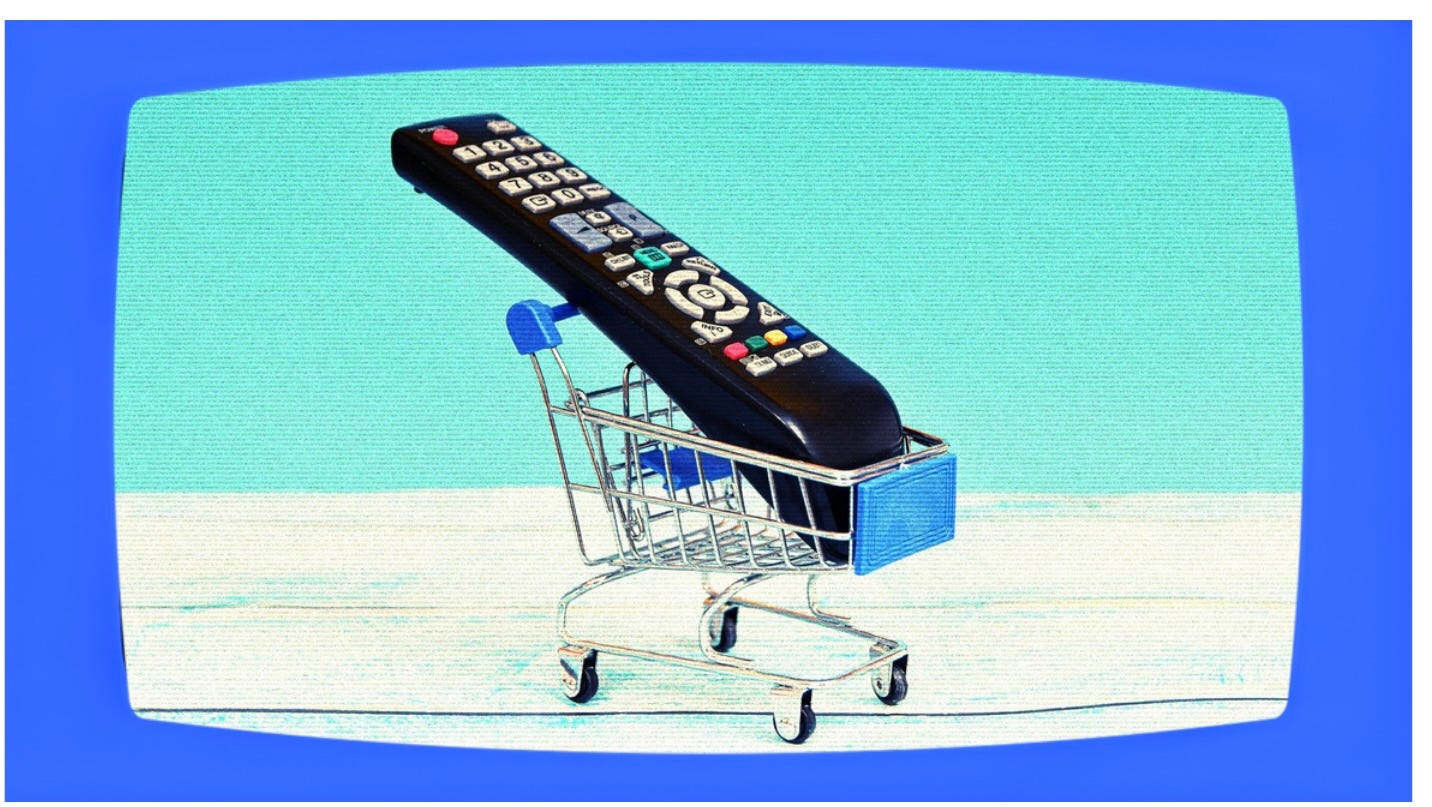TV on Aisle 5! The Brands Paying Direct for Unscripted Budgets (With a Catch)
UTA and others broker direct deals as traditional production money runs dry, with an eye on scripted TV next
Manori Ravindran covers international TV from London for Series Business. She recently wrote about Ted Sarandos and Netflix’s impact on the U.K. as a production hub, the death of mid-budget TV and what’s selling and who’s buying in the global TV market.
British supermarket Marks & Spencer used to be the go-to destination for winter thermals, an Indian meal deal on Friday night and, for the North Americans here, a Royal Family shortbread tin. Now, the 140-year-old chain, known as M&S, has a new category at its proverbial checkout: Unscripted TV shows.
This summer, commercial broadcaster ITV aired season four of an M&S-funded Cooking with the Stars — a competition show in which top chefs mentor competing, overzealous celebrity cooks. If you happened to wander into an M&S Food store while the show was on air, you’d likely spot some cherry tomatoes emblazoned with “As seen on TV” branding, your carrier bag would bear the show’s logo and you may even have spotted M&S mascot Percy Pig in a Cooking With the Stars apron.
Two weeks after the show wrapped last month, M&S was back in a primetime ITV1 slot for M&S: Dress the Nation, yet another competition series, this time to find the brand’s next big fashion designer — not to mention serve as ITV’s answer to the BBC’s long-running Great British Sewing Bee.
A few years ago, some producers may have stuck their noses up, Percy Pig-style, at the very mention of “branded” content. But in this New World Order — in which fast-food chain Chick-fil-A is launching a streaming service and luxury brands clamor to be written into Netflix’s Emily in Paris — the British TV industry is finally cottoning to the power (and money) of brands. In turn, brands are swooping in to fund the mid-budget non-scripted shows that broadcasters have been turning their backs on. There’s even talk here of brands stepping in for big-budget entertainment shows, and potentially even scripted drama (and no, not just product placement).
“A lot of scripted producers and production companies want to try to figure out how to partner more closely with brands,” says Julian Jacobs, head of UTA New York and co-head of entertainment marketing (who will go into more detail below).
“There’s been a real change in the semantics of how broadcasters talk about working with brands,” says Luci Sanan, founder of commercial consultancy 53 Degrees North Media. “It used to be that brand-funded entertainment was a dirty word that referred to content that wasn’t editorially led, ran in the middle of the night and was a load of hassle to put together.”
But now, broadcasters understand they need advertisers to make the budgets work. “At the same time, you have advertisers going, ‘Oh hang on, we can get a lot of media value by investing in a program, having some sort of editorial input and getting the assets as well as the program,’” adds Sanan.
Yet as tempting as it is to view brand-funded entertainment (also known as ad-funded programming, or in the U.S., branded entertainment) as a panacea to the industry’s headaches — especially in unscripted — brands and TV production companies aren’t always natural bedfellows. Sources say bad manners abound as producers rush to brands as though they’re cash machines, and then struggle to respect their partners’ needs.
In this issue, you’ll learn:
The strategy that Jacobs at UTA believes will enable brands to fund scripted shows
Why UTA signed on to rep global production company Banijay’s new brand-funded entertainment division
The challenge producers face getting a brand on board to fund a show
All the ways brands operate that most producers don’t understand
The four primary show formats where broadcasters and brands want to work together
The “line in the sand” of who controls the content of a series
Why some brands are opting to sponsor a pre-existing series rather than create a new one from scratch
What prompts some brands to skip working with producers and broadcasters and go direct to YouTube
How YouTube, TikTok and other social platforms still play a role for brands even when they sponsor linear broadcast shows
Why producers are reviving formats in certain markets as brand-funded digital series
This column is for paid subscribers only. For full access and to continue reading all Ankler content, paid subscribers can click here.






